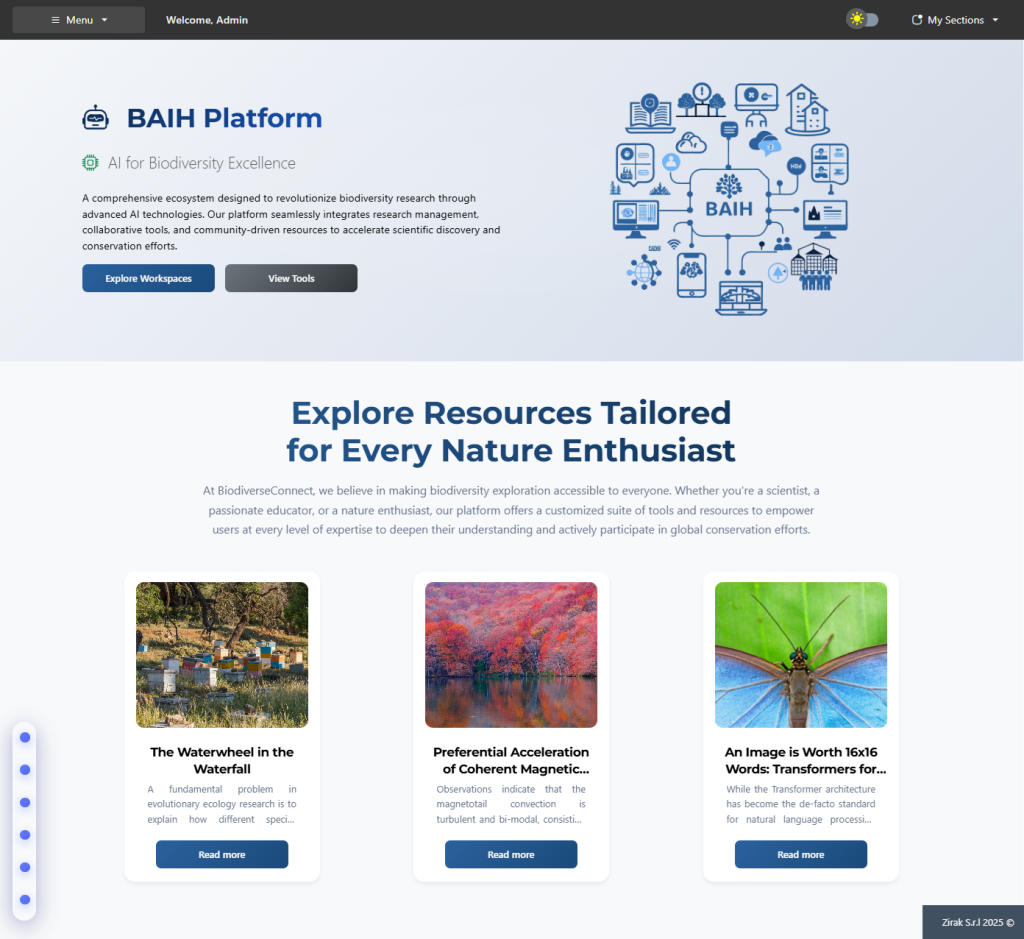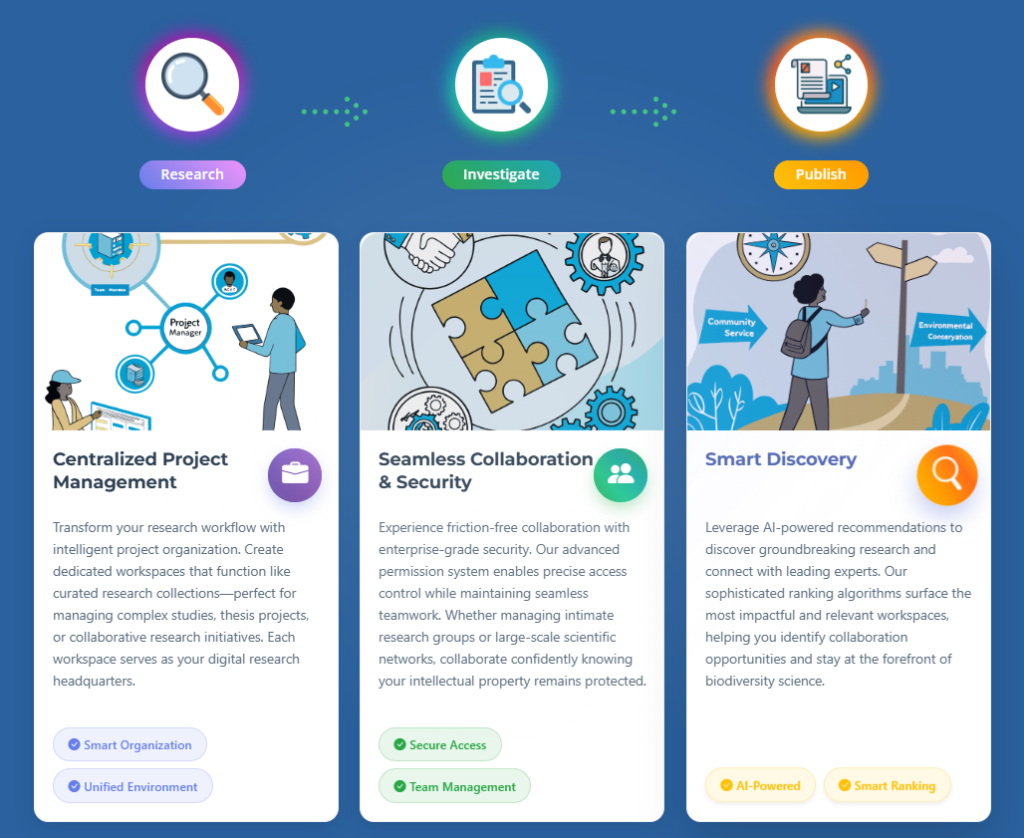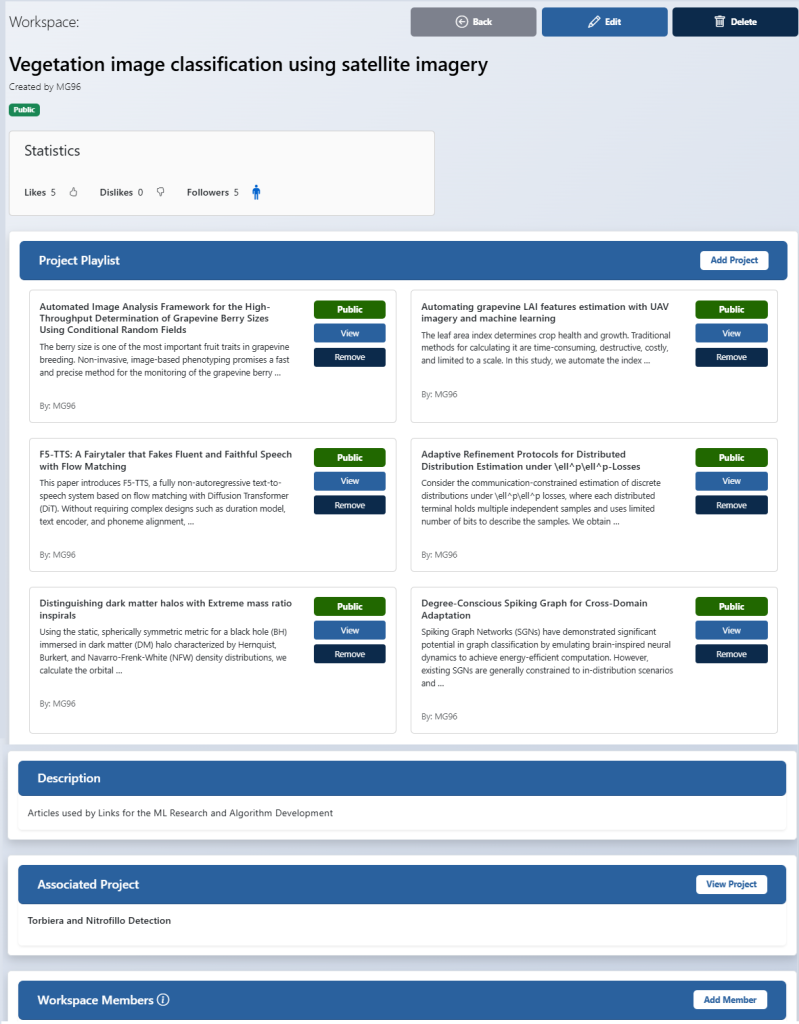Unlocking Biodiversity Value Through Data
Overview
The BAIH Platform is a digital ecosystem designed to empower the biology and remote sensing research communities. It serves as a centralized hub for sharing, discovering, and organizing scientific resources — from academic papers and datasets to code repositories, models, and tools.
Built around the principles of open science and collaborative research, the platform connects outputs from major scientific repositories such as GitHub, arXiv, Hugging Face, and Papers with Code, bringing them together in one unified interface.

Goals
Features at a Glance
🔍 Smart Search & Indexing: Find and connect resources across multiple repositories.
🧩 Modular Architecture: Django-based system with PostgreSQL backend and automated pipelines for resource aggregation.
👥 Role-Based Access: Fine-grained permissions for owners, admins, editors, and viewers across projects and workspaces.
📂 Integrated Data Pipeline: Automatically retrieves and updates projects and linked resources.
🌐 Community Engagement: Users can suggest tools, share playlists, and collaborate openly.

How It Works
Projects
Each Project represents a scientific article, publication, or technical work. It consolidates all related resources — metadata, code, datasets, and models — into a single structured record.
Projects can be:
-
- External: Automatically compiled from public sources like arXiv, GitHub, or Hugging Face.
- Internal: Manually created by users to host original work, such as theses or prototype studies.

Workspaces
A Workspace acts as a collaborative “research desk,” where users can group and organize multiple projects under a common theme.
Each workspace includes:
-
- An Associated Project — the main focus (e.g., a thesis or research publication).
- A Project Playlist — related works, references, and supporting materials.
- Collaboration tools — invite peers with specific roles (editor, viewer, manager) and manage shared research efforts.

Citizen Science Tools
Citizen Science Tools are community-suggested computational or scientific utilities shared openly on the platform.
These may include web applications, datasets, visualization tools, or open-source packages that help researchers explore or analyze data.
Each CSTool entry contains:
-
- Title and short description
- How-to guide or usage notes
- Links to repositories or live demos
- Optional visuals or banners
CSTools are reviewed and validated by platform moderators, ensuring quality and relevance to the research community.

Our partners



